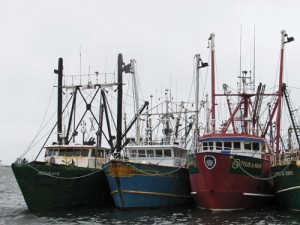
In December, NOAA released the 11th Fisheries Economics of the United States report.
The report includes economic information related to commercial and recreational fishing activities, and fishing-related industries for the United States and the 23 coastal states for 2016.
The report includes statistics by subject:
Commercial fisheries (commercial fisheries landings, revenue, price trends)
Recreational fisheries (recreational fishing effort, participation rates, expenditure information)
Fishing-related industries (employer and non-employer establishment, payroll, annual receipt information for fishing-related industries)
Economic impact (employment, sales, value-added impacts)
Fisheries Economics of the United States 2016 Highlights:
The commercial fishing and seafood industry (harvesters, processors, dealers, wholesalers, and retailers) supported 1.2 million jobs in 2016, generating $144 billion in sales impacts and adding $61 billion to the GDP.
The U.S. seafood harvest increased 2 percent from 2015, and supported 711,000 jobs across the entire American economy.
The largest state-level employment impacts generated by the seafood industry occurred in California, Massachusetts, and Florida.
Landings revenue in the United States totaled $5.3 billion in 2016.
Sea scallops had the largest revenue increase in 2016, bringing in $46 million in landings revenue.
Sea scallops also brought the highest average ex-vessel price per pound ($12) among the key species and species groups in 2016, ranging from $9.51 in New York to $12.81 in Maine.
The U.S. lobster industry performed well, with a $43 million increase in revenue, primarily from the harvest of lobster off the coast of Maine and New England.
source: NOAA Fisheries